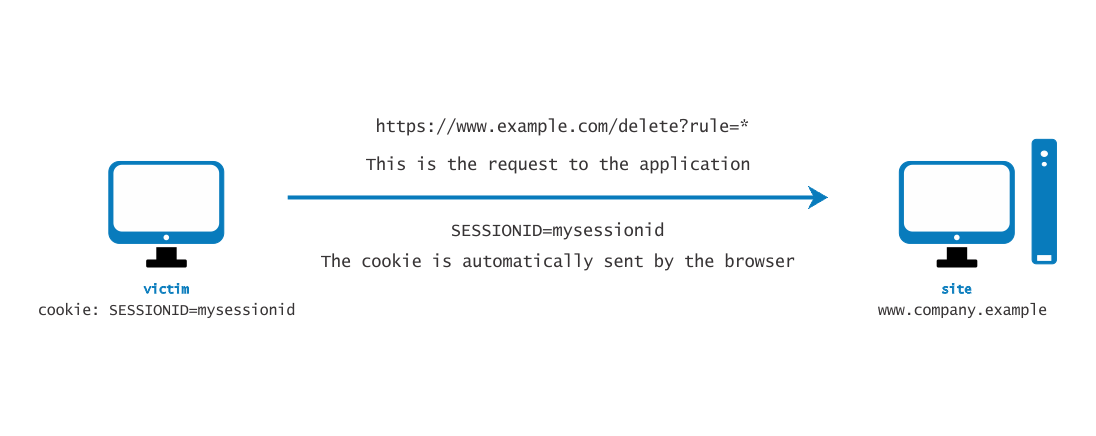Testing for CSRF
A Tutorial Blog on how to check for CSRF Vulnerability
Cross-Site Request Forgery (CSRF) Attack Overview
Summary
Cross-Site Request Forgery (CSRF) is an attack that forces an end user to execute unintended actions on a web application in which they are currently authenticated. With a little social engineering help (like sending a link via email or chat), an attacker may force the users of a web application to execute actions of the attacker’s choosing. A successful CSRF exploit can compromise end user data and operation when it targets a normal user. If the targeted end user is the administrator account, a CSRF attack can compromise the entire web application.
Key Points of CSRF Vulnerability
- Web browser behavior regarding the handling of session-related information such as cookies and HTTP authentication information.
- An attacker’s knowledge of valid web application URLs, requests, or functionality.
- Application session management relying only on information known by the browser.
- Existence of HTML tags whose presence cause immediate access to an HTTP[S] resource; for example, the image tag
<img>.
Points 1, 2, and 3 are essential for the vulnerability to be present, while point 4 facilitates the actual exploitation, but is not strictly required.
How CSRF Works
- Browsers automatically send information used to identify a user session (e.g., cookies).
- Attackers can identify application URLs and parameters by code analysis or by accessing the application.
- Information such as cookies or HTTP-based authentication is stored by the browser and sent with each request.
- GET and POST requests can both be exploited by CSRF.
Example: Session Riding
The GET request could be sent by the user in several different ways:
- Using the web application
- Typing the URL directly in the browser
- Following an external link that points to the URL
These invocations are indistinguishable by the application. For example, an attacker can embed a malicious image tag in an email:
1
<img src="https://www.company.example/action" width="0" height="0">
When the browser displays this page, it will try to display the specified zero-dimension (thus, invisible) image, resulting in a request being automatically sent to the web application.
Example: Firewall Management Console
Suppose a firewall web management console allows an authenticated user to delete a rule by its ID or all rules by specifying *. The following GET request would delete all firewall rules:
1
https://www.company.example/fwmgt/delete?rule=*
Test Objectives
- Determine whether it is possible to initiate requests on a user’s behalf that are not initiated by the user.
How to Test for CSRF
- Audit the application’s session management. If it relies only on client-side values (cookies, HTTP authentication), it is vulnerable.
- Resources accessible via HTTP GET requests are easily vulnerable.
- POST requests can also be automated and are vulnerable.
- Use the following sample for POST-based CSRF testing:
1
2
3
4
5
6
7
8
<html>
<body onload='document.CSRF.submit()'>
<form action='https://targetWebsite/Authenticate.jsp' method='POST' name='CSRF'>
<input type='hidden' name='name' value='Hacked'>
<input type='hidden' name='password' value='Hacked'>
</form>
</body>
</html>
CSRF with JSON Payloads
In case of web applications in which developers are utilizing JSON for browser to server communication, a problem may arise because there are no query parameters with the JSON format, which are required for self-submitting forms. To bypass this, we can use a self-submitting form with JSON payloads, including hidden input, to exploit CSRF. We’ll have to change the encoding type (enctype) to text/plain to ensure the payload is delivered as-is. The exploit code will look like the following:
1
2
3
4
5
6
7
8
9
<html>
<body>
<script>history.pushState('', '', '/')</script>
<form action='https://victimsite.com' method='POST' enctype='text/plain'>
<input type='hidden' name='{"name":"hacked","password":"hacked","padding":"'value='something"}' />
<input type='submit' value='Submit request' />
</form>
</body>
</html>
The POST request will be as follows:
1
2
3
4
5
POST / HTTP/1.1
Host: victimsite.com
Content-Type: text/plain
{"name":"hacked","password":"hacked","padding":"=something"}
When this data is sent as a POST request, the server will accept the name and password fields and ignore the one with the name padding as it does not need it.
